Destinations Central and South America
Oleh_slobodeniuk/Getty Images
Stephanie Mee
Darien Gap, Panama
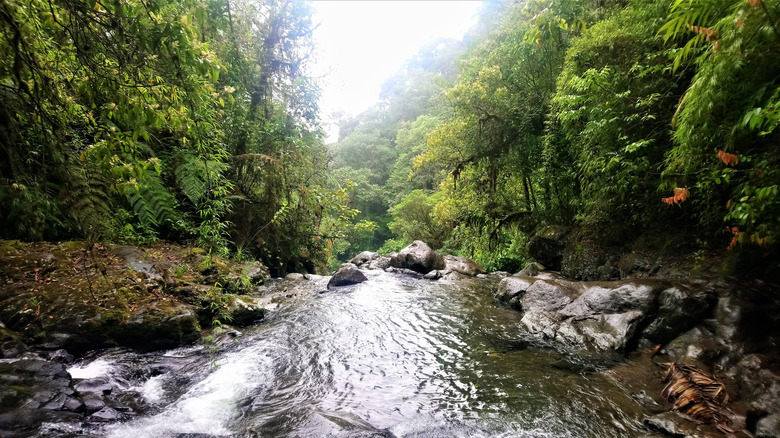
Dense rainforests, rugged mountains, and murky swamps make up the Darien Gap, a remote region on the border of Panama and Colombia. Despite its dangerous terrain, thousands of migrants risk their lives traversing the Gap on their long journey north to the U.S. According to Human Rights Watch, more than 500,000 migrants were expected to cross the jungle in 2023. Lately, the Darien Gap has also been attracting tourists drawn to this pristine pocket of nature in Panama.
There is no doubt that the Darien Gap can be stunningly beautiful. The lush vegetation, raging rivers, and misty peaks are a nature lover’s dream. However, keep in mind that the area has no roads or bridges. The terrain is treacherous, and if something happens, it can be difficult to get out or even call for help. In addition, criminal groups are very active in the region. Kidnappings, robberies, and rapes are becoming more common.
San Pedro Sula, Honduras
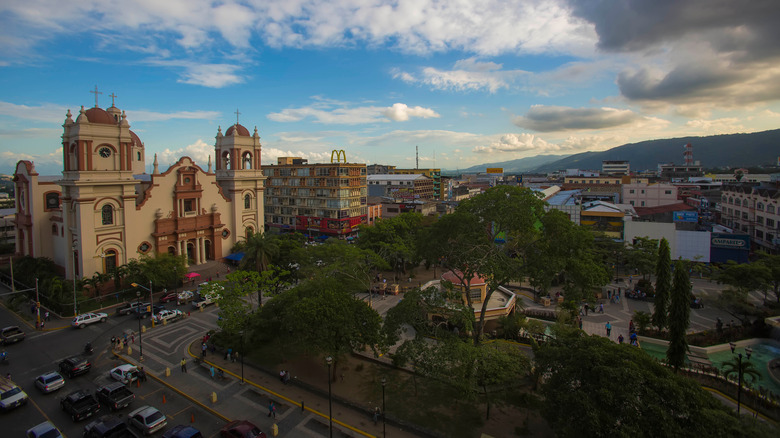
Although San Pedro Sula is no longer considered the murder capital of the world, it’s still a pretty wild place. Drugs and guns are easily accessible, robberies and kidnappings are common, and notoriously violent gangs like Barrio 18 and MS13 have a strong presence in the city. Gang violence has caused the government to impose partial emergency measures like curfews in the city. It has also caused many residents to flee altogether.
San Pedro Sula is the second-largest city in Honduras by population. While there are some interesting things to see, like the Museo de Antropología e Historia and the Catedral de San Pedro Sula, the city is not exactly tourist-friendly. It’s rare for foreigners to be targeted by gangs, but pickpocketing and muggings are a concern. If violence breaks out, there is also the risk of getting caught in the crossfire. If you want to experience Honduras, you’re probably better off heading to safer spots like Roatán Island, the dive sites in Utila, or the ruins of Copan.
Volcán de Fuego, Guatemala
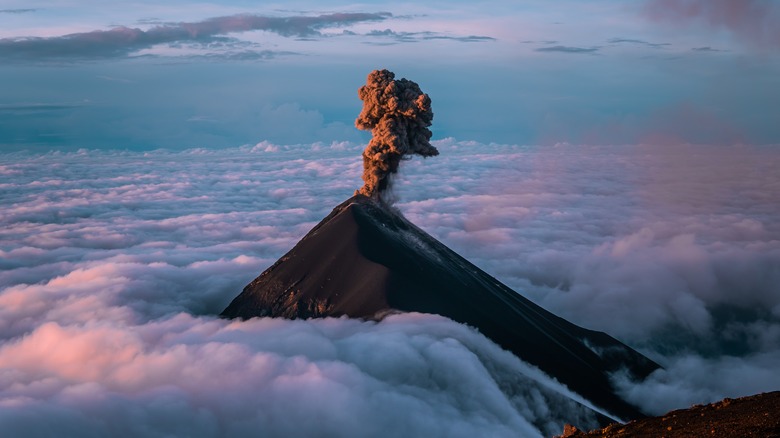
JackKPhoto/Shutterstock
Visit Antigua in Guatemala, and you can’t miss Volcán de Fuego towering in the background. The stratovolcano rises from the plains about 10 miles from the city. This is one of the most active volcanoes in Central America, with regular eruptions sending ash, plumes, and lava soaring into the sky. A massive eruption in June 2018 left a death toll of over 200 people. Fuego could explode again at any time, making this one of the most dangerous volcanoes in the region.
Thrill seekers can get up close and personal with this hulking beast on a hike up Volcan de Acatenango, which is joined to Fuego at the base. The hike typically takes two days and gives great views of the peak of Fuego from the Acatenango base camp. Several tour companies, like Soy Tours, offer optional hikes up the slopes of Fuego that take you as close to the summit as you can safely go. Some hikers have reported feeling the earth rumble beneath their feet and seeing bursts of lava from the cone.
San Salvador, El Salvador
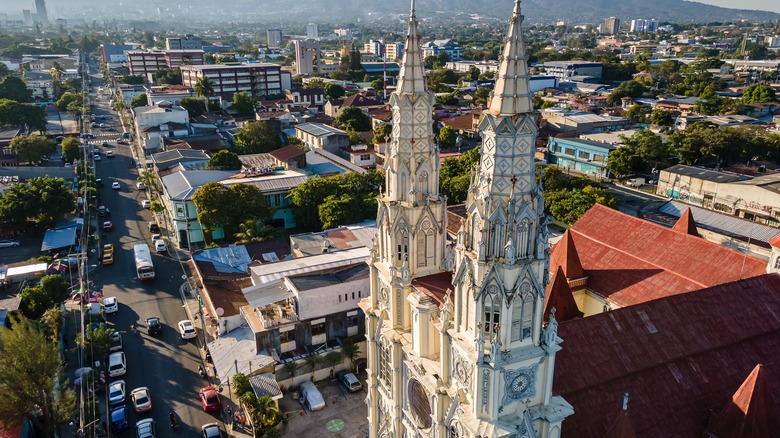
Gianfranco Vivi/Shutterstock
El Salvador has a long history of instability and violence, and the capital city of San Salvador continues to be at the center of much of it. The civil war between 1979 and 1992 left thousands of people dead, displaced, and in abject poverty. San Salvador saw a huge increase in gang violence following the war, particularly after the U.S. deported thousands of former Salvadoran refugees who had criminal records back to El Salvador. Today, the city still suffers from high levels of gang violence, drug dealing, and robberies.
The government has taken drastic measures to combat crime in San Salvador and other parts of the country. In 2022, the president of El Salvador declared a state of exception that gives the authorities the power to arrest anyone suspected of gang activity and detain them without due process. The crackdowns in San Salvador have been particularly harsh. While authorities are not outright targeting tourists, you don’t want to end up in the wrong place at the wrong time. Prisons in San Salvador are no joke.
Tárcoles River, Costa Rica
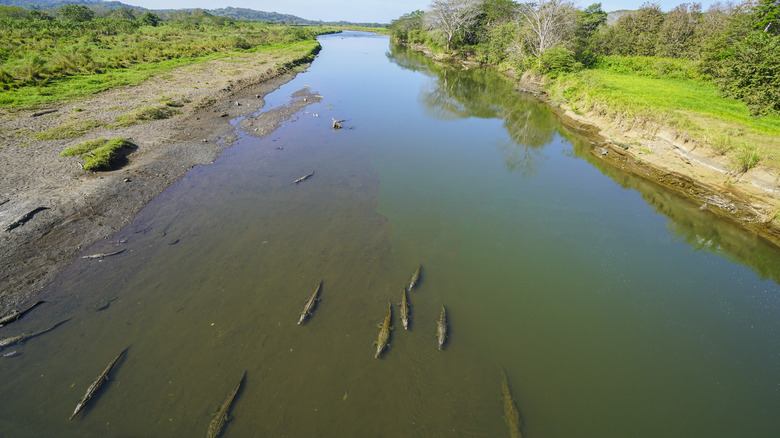
Davorlovincic/Getty Images
If you’re driving towards Jaco on Costa Rica’s Costanera (Highway 34), you may come across crowds gathered on a bridge over the Tárcoles River. Stop to check it out, and there’s a good chance you’ll see dozens of saltwater crocodiles sunning themselves on the banks below. Some of the crocs span an impressive 12 feet. This is one of the most croc-infested waterways in Costa Rica, and some say it has the most crocodiles of any river in the world.
It goes without saying that the river is a very dangerous place to swim. You might see locals heading down to the shore to feed the crocs, but it’s highly advised against, especially when you can see the animals from a safe distance. In 2000, the government widened the sidewalk on the bridge and added metal railings to protect sightseers from passing traffic or accidentally falling into the river. If you want a closer view of the crocs, enterprising locals offer boat tours.
Managua, Nicaragua
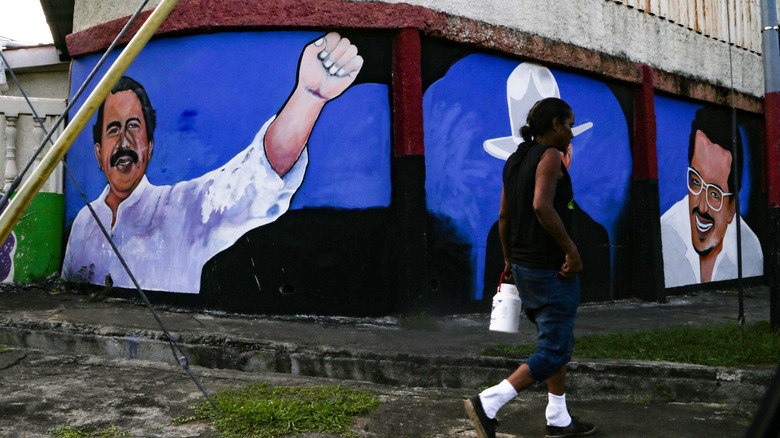
Getty Images/Getty Images
Nicaragua is becoming a hot travel destination thanks to its beautiful beaches, colonial towns, and mountainous regions rich with coffee plantations. Managua is the capital city, so consider exploring it for a day or two. However, travelers should be aware that the crime rate in Managua is high. Poverty is widespread, and thefts and violent crimes occur often. In 2022, the U.S. Embassy in Nicaragua released an alert about increased armed robberies in Managua.
The political situation in Nicaragua can be dicey as well. In 2018, President Daniel Ortega faced a slew of anti-government protests in Managua and other prominent cities in Nicaragua. He responded by mobilizing police forces that killed more than 300 people. Since then, the government has cracked down on dissenters, jailing thousands of people who speak out publicly against the government. If you’re planning a trip to Managua, it’s best not to talk about politics. And don’t even think about joining a protest.
Great Blue Hole, Belize
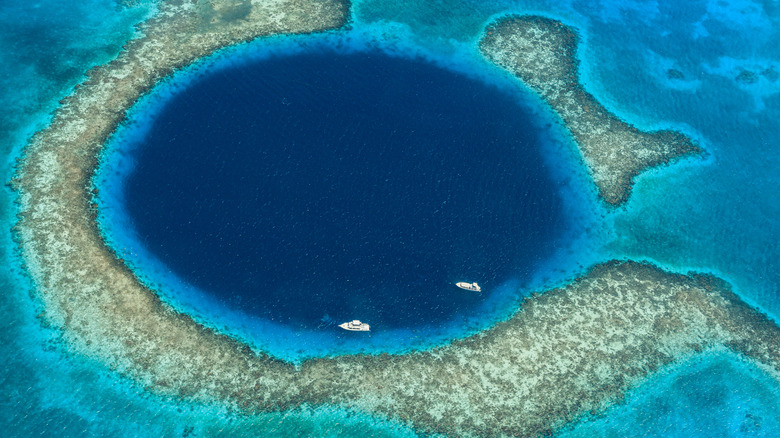
Kota Irie/Shutterstock
The Great Blue Hole is not only considered one of the world’s best scuba diving destinations but also one of the most dangerous. Located in the center of Lighthouse Reef off the coast of Belize, this sinkhole plunges to a depth of over 410 feet. Inside, there are networks of caves with stalactites and stalagmites. The deeper you go, the darker it gets, which can be disorienting. The hole is also home to schools of hammerhead and black-tip sharks. It’s a captivating place to explore, but it’s best for experienced divers.
If you decide to brave the depths of the Great Blue Hole, several companies offer diving trips from San Pedro to Ambergris Caye and Placencia. Alternatively, you can book a liveaboard trip. The experts at PADI® recommend having your Advanced Open Water and Deep Diver certifications before attempting the dive. Be sure to follow your dive master’s instructions, and don’t push your limits too much. Advanced divers can safely descend to a maximum of 130 feet.
Santa Ana, El Salvador
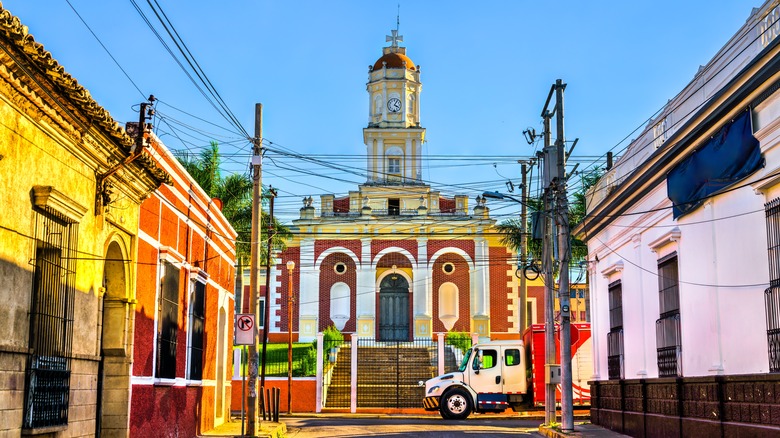
Leonid Andronov/Shutterstock
Santa Ana is the second largest city in El Salvador and is renowned for its striking colonial architecture. Just outside the city are lush coffee plantations and two volcanoes, one of which has a stunning turquoise lake in its crater. It’s a beautiful place to visit, but like many cities in El Salvador, Santa Ana has its fair share of issues. In fact, one of the first things many tourists notice is that armed guards seem to be on every corner.
Organized gangs are active in Santa Ana, as the city is on a major drug smuggling corridor that runs between El Salvador, Guatemala, and Honduras. In 2022, a shootout between Barrio 18 members and local police took place just outside of Santa Ana. The good news is violent crime has been decreasing since the government imposed the state of exception to round up gang members. As a tourist, you’re unlikely to be targeted by gangs. Just be mindful of petty crimes like pickpocketing.
Pulhapanzak Waterfall, Honduras
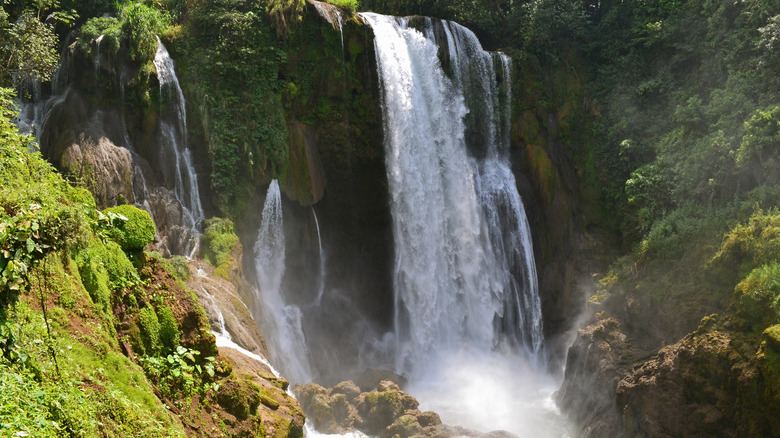
worldroadtrip/Shutterstock
The thundering falls of Pulhapanzak Waterfall are a sight to behold from a distance. Get up close, and you could find yourself in a slippery situation. There are hidden caves behind the cascades, but to get to them, you’ll have to traverse slick rocks and deal with water pummeling down on you from over 140 feet above. The crashing water makes it difficult to see, which is not ideal, considering one wrong step could send you hurtling down to the rocks below. Many people have been injured and even died in the falls.
Pulha, as locals call it, is located off the RN-54 highway halfway between Tegucigalpa and San Pedro Sula. Many people visit the falls on a day trip from Yojoa Lake. If you want to tour the caves, there are local guides on site who can take you behind the falls. You’ll have to sign a waiver first saying the guides are not responsible for accidents. Then, they’ll outfit you with a helmet and life jacket and take you through the cascades. Cliff jumping is often included in the tours. There are also zip lines that run along the river and above the falls.
Guatemala City, Guatemala
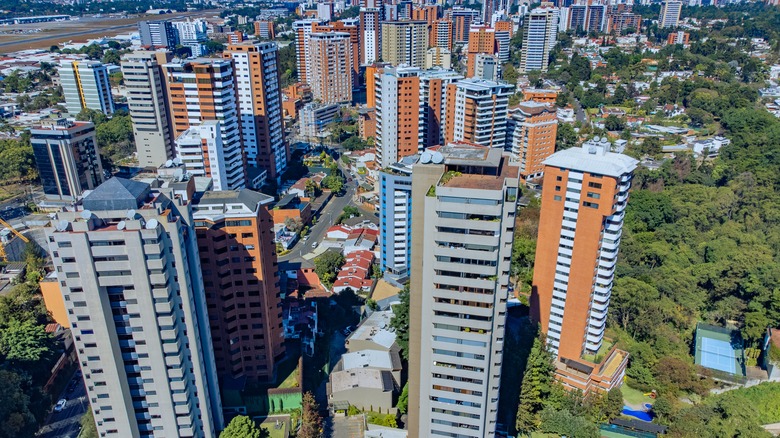
Rene Hernandez0705/Shutterstock
With a population of over 3 million people, Guatemala City is the largest city in Central America. There’s much to see and do here, from fascinating museums to fabulous restaurants, colonial architecture, and Mayan ruins. Just don’t go too far off the beaten path. Some areas of the city experience high levels of crime, including assault and armed robbery. For example, the U.S. Embassy in Guatemala has recommended travelers avoid zones 5, 6, 7, 12, 13, 17, 19, 21, and 24.
Guatemala City is also prone to natural disasters. The city is located on the Ring of Fire, so it experiences numerous earthquakes. The earthquake of 1976 caused extensive damage in the city and took over 22,000 lives. Fuego and Pacaya are two of the most active volcanoes in the country, and both are located within proximity to Guatemala City. The city also experiences tropical storms. In 2010, Tropical Storm Agatha brought torrential rain that created a sinkhole nearly 200 feet deep in the northern part of the city.
Lake Nicaragua, Nicaragua
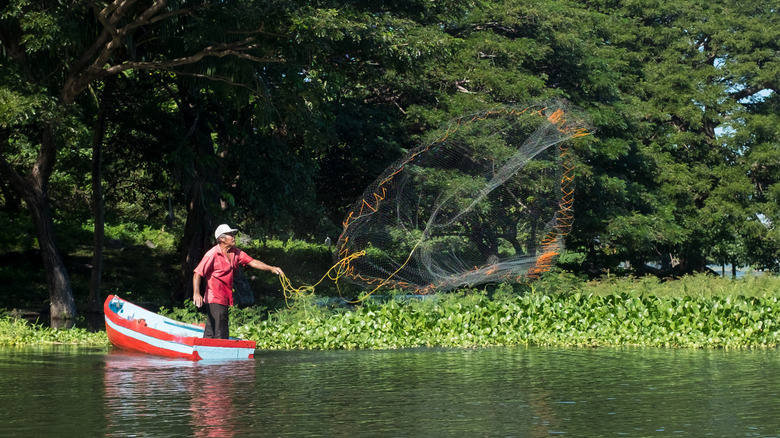
Epics/Getty Images
Spanning over 3,100 square miles, Lake Nicaragua (also known as Granada or Cocibolca) is the largest lake in Central America. There are several islands scattered throughout the lake, including Ometepe, with its twin volcanoes. The deep blue water looks enticing, but you may want to think twice about swimming in it because there are bull sharks below the surface. This is one of only a few shark-infested lakes in the world.
Bull sharks get their name from their aggressive behavior, and they have been known to attack people. The ones in Lake Nicaragua are believed to have entered the lake via the San Juan River, which flows into the Caribbean Sea. While there have only been three reported shark attacks in the lake, all three were unprovoked and fatal. Statistically, the chances of being attacked while swimming in the lake are low, but you might not want to risk it.
Tegucigalpa, Honduras
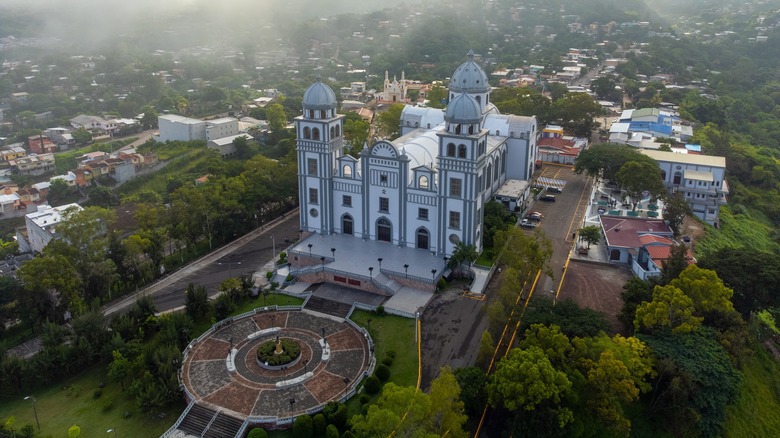
djoseri/Shutterstock
Tegucigalpa is the capital city of Honduras and a bustling spot with pleasant parks, lovely old churches, and modern cafés and shops. Unfortunately, it’s gotten a bad rap for its high levels of crime, including armed robbery, extortion, and homicide. Gangs such as MS13 and Barrio 18 terrorize various neighborhoods, and gang members aren’t afraid to use violence to enforce their will and maintain control.
In 2022, President Xiomara Castro declared a state of emergency in Tegucigalpa and San Pedro Sula to combat gang crimes like extortion and drug trafficking. She imposed a state of exception that allows authorities to detain anyone suspected of gang activity or ties to organized crime. This decision aimed to regulate criminal activities, which had become a major threat to the safety and security of residents. Homicide rates in Tegucigalpa have dropped since the measures were put in place, but the city still has a long way to go in eradicating crime.
La Libertad, El Salvador
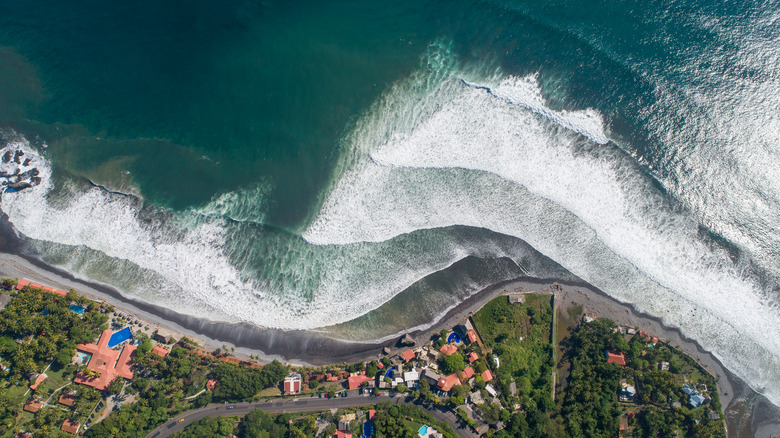
Saul Villatoro/Shutterstock
The La Libertad coastline in El Salvador is a surfer’s dream, with huge waves rolling nearly all year round. However, those swells can be dangerous for swimmers not used to navigating rough surf and strong undertows. The U.S. Embassy in El Salvador put out a travel alert in 2021 warning people of the dangerous conditions at El Salvador’s popular tourist beaches. According to the alert, strong currents are an issue, and the chances of being rescued and receiving decent medical care can be slim.
Popular beaches in and around La Libertad include El Tunco, Playa Mizata, and Playa La Paz. The beaches are beautiful, and the waves are great for surfing, but they’re not necessarily the best for swimming. Many people have been swept out to sea and drowned in the area over the years. If you want to stay safe at the beach, be sure to take note of any red flags indicating dangerous conditions, and don’t overestimate your swimming abilities.

